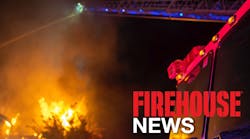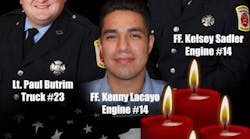New York City has had more than its share of firefighter deaths in the past two years and has put a tremendous effort into identifying their causes. The chiefs in the two Safety Operating Battalions have the responsibility for investigating all line of duty deaths and serious injuries and they prepare excellent analysis reports that document the circumstances and causal factors of each fatal incident.
The investigation of one incident in New York City identified simple deviations from standard operating procedures that combined to turn a “routine” apartment into a line-of-duty fatality. This shows how many causal factors and circumstances can combine to result in a fatality.
The fire was in one apartment in a multi-story, occupied, fire-resistive building. The first-due engine and truck companies reached the fire floor at about the same time but the truck company didn’t wait for the engine company to connect and charge its line before entering the apartment to search for occupants. There was an open window on the windward side of the apartment and the interior “lit up” when the search team entered, driving them back into the corridor. The required self-closer on the door failed to operate, which allowed the heat and smoke to engulf the corridor.
The engine company had decided to hook up to a standpipe outlet valve in the corridor on the fire floor, instead of an outlet in the stairway or on the floor below. The sudden rush of heat and smoke forced them to drop to the floor to put on their self-contained breathing apparatus (SCBA) masks.
There was no wheel on the handwheel on the standpipe outlet valve and the firefighter at the valve couldn’t find the bag that the officer had carried in which contained a spare handwheel. With no water, the heat and smoke couldn’t be pushed back into the apartment. The truck company officer and two firefighters became disoriented and found themselves in a dead-end corridor, where one of the firefighters ran out of air very quickly. The engine company crew became separated in the smoke and found refuge in different stairways and apartments.
The pump operator had connected to a sprinkler connection instead of the standpipe connection. The first- and second-due engine companies stretched their attack lines with 13¼4-inch leaders and combination nozzles, instead of 21¼2-inch lines with straight tips. When the second-due company’s line was fully charged, there was insufficient pressure in the building system to provide an effective stream and knock down the fire. The firefighter who had run out of air was fatally injured before he could be rescued.
These and several other individual problems and miscues at this one incident resulted in a line of duty death. If the wind had not been blowing in the wrong direction that night (just as it was in San Francisco), the fire probably would have been easily controlled and everyone would have gone home safely. No one would have investigated the incident and no one would have recognized that a series of minor errors and procedural violations had the potential to cause a fatality. From studying what went wrong, we can learn how to keep it from happening again.
J. Gordon Routley, Reade Bush and Jeffrey Stern are employed by TriData Corp., which contracts with the U.S. Fire Administration to conduct the annual analysis of line-of-duty deaths and to develop reports on individual major incidents. They are active members of fire departments in Prince George’s, Arlington and Montgomery counties, respectively. The reports are available through the U.S. Fire Administration in Emmitsburg, MD. Part 1 of this article was published in the July 1996 issue and Part 2 appeared in August 1996.




